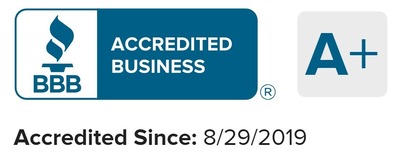When it comes to managing rental properties, landlords often focus on interior updates, maintenance, and tenant management. And one often overlooked area is outdoor additions. But outdoor additions can significantly enhance a property’s value, curb appeal, and tenant satisfaction. Patios, decks, pergolas, fences, storage sheds, landscaping, and other exterior improvements not only make properties more attractive but also can increase rental income and long-term property value.
With over 15 years of experience managing rental properties in Oklahoma City and nearby metro areas, I’ve seen how thoughtful outdoor additions can boost rental income and tenant satisfaction. But before you start adding features to your rental property, there are critical factors to consider: cost, maintenance, liability, and local regulations. This article will cover everything you need to know about outdoor additions, helping you make smart investment decisions and avoid costly mistakes.
Key Takeaways
- Outdoor additions boost property value and rental income – Features like decks, patios, and fences can justify 5–15% higher rents.
- Know your costs and ROI – Budget for $8–$45 per square foot for decks/patios, and expect 50–80% ROI on most additions.
- Check local regulations first – Permits, zoning laws, and HOA rules can affect what you can build and avoid costly mistakes.
- Maintenance is ongoing – Wood decks, fences, and landscaping require regular upkeep to prevent liability and keep tenants happy.
- Prioritize safety and insurance – Poorly built or maintained additions can increase liability risks. Update insurance after any major change.
- Match upgrades to tenant demand – Families prefer fenced yards, while young professionals value patios and entertaining spaces.
- Understand tax benefits – Outdoor additions are usually depreciable capital improvements, not immediate write-offs.
- Plan for long-term value, not just aesthetics – Choose additions that are functional, low-maintenance, and fit your rental market.
Understanding Outdoor Additions for Rental Properties
Outdoor additions are any permanent or semi-permanent structures or improvements installed outside a residential property. Outdoor spaces are increasingly a deciding factor for renters. According to a 2023 Zillow Rental Market Report, properties with well-maintained outdoor areas attract tenants faster and can command rents 5–10% higher than comparable units without outdoor appeal. For landlords like you, this makes outdoor additions not just a cosmetic choice but a strategic investment.
What Outdoor Additions Can You Consider?
You have a wide range of outdoor additions to consider. Each comes with unique benefits, costs, and considerations.
So, types of outdoor additions are:
1. Decks and Patios
Decks and patios are popular outdoor additions because they provide functional space for tenants to relax or entertain. A well-designed deck or patio can make your property stand out in a competitive rental market.
Pros:
- Enhances tenant experience, increasing satisfaction and retention.
- Can justify higher rental rates.
- Adds aesthetic appeal and market differentiation.
Cons:
- Requires routine maintenance: sealing, cleaning, and structural inspections.
- Liability concerns if surfaces become slippery or deteriorate.
Materials and Costs:
- Pressure-treated wood: $15–$25 per square foot.
- Composite decking: $30–$45 per square foot.
- Concrete patios: $8–$15 per square foot.
ROI Tip: A 2019 Remodeling Magazine study found that a mid-range deck addition can recoup up to 70% of its cost in increased property value.
2. Fences and Privacy Features
Fencing is not just about marking property lines; it’s about security, privacy, and tenant comfort.
Pros:
- Provides security for tenants and pets.
- Enhances privacy, which appeals to families and pet owners.
Cons:
- Maintenance for wooden fences, including painting or sealing.
- Potential disputes with neighbors or HOA restrictions.
Material Options:
- Wood: classic look, moderate cost, needs upkeep.
- Vinyl: low maintenance, durable, higher upfront cost.
- Chain link: affordable, less aesthetic appeal.
Cost Estimates:
- Wood: $15–$30 per linear foot.
- Vinyl: $20–$40 per linear foot.
- Chain link: $7–$15 per linear foot.
ROI Tip: Fencing is particularly valuable for properties targeting families or pet-friendly tenants, often increasing occupancy rates.
3. Storage Sheds and Outdoor Buildings
Adding storage solutions like sheds can significantly enhance a tenant’s experience. Many renters look for extra space for bikes, tools, or seasonal items.
Pros:
- Provides convenient storage options for tenants.
- Can increase rental desirability without major structural changes.
Cons:
- Requires permits in many areas.
- Security concerns if sheds are not lockable.
- Ongoing maintenance for the roof, doors, and structure.
Cost and ROI:
- Small prefab shed: $1,000–$3,000.
- Custom-built shed: $3,000–$6,000.
- ROI depends on tenant demand; storage can be marketed as a premium feature.
4. Landscaping and Green Spaces
Landscaping is often the first thing tenants notice when visiting a property. Well-maintained greenery can boost curb appeal and tenant satisfaction.
Pros:
- Enhances aesthetic appeal and first impressions.
- Attracts tenants willing to pay higher rents.
- Can reduce tenant turnover by creating a welcoming environment.
Cons:
- Requires regular upkeep: mowing, trimming, and fertilizing.
- Water costs, particularly high in drier climates.
Cost-Effective Strategies:
- Low-maintenance plants and shrubs.
- Mulching to reduce watering and weeds.
- Xeriscaping in drought-prone areas.
ROI Tip: According to a National Association of Realtors (NAR) report, well-landscaped properties can increase value by up to 12%.
5. Outdoor Lighting and Safety Features
Outdoor lighting improves safety, security, and ambiance for tenants. It’s a small investment that can yield significant benefits.
Types of Lighting:
- Pathway lights for walkways.
- Motion-sensor lights for security.
- Solar-powered lights for eco-friendly option.
Pros:
- Enhances property security.
- Improves tenant safety at night.
- Increases curb appeal.
Cons:
- Requires electrical installation and periodic maintenance.
- Some lighting options can increase energy costs.
ROI Tip: Adequate outdoor lighting is often cited as a key factor in tenant satisfaction, particularly in urban areas where safety is a concern.
6. Recreational or Functional Additions
Outdoor recreational features, like outdoor kitchens, fire pits, seating areas, or small playgrounds, can differentiate your property in the rental market.
Pros:
- Attracts tenants seeking lifestyle amenities.
- Can justify higher rental rates.
Cons:
- Liability concerns for injuries.
- Maintenance and insurance costs.
Tip: Always check local regulations and insurance policies before adding recreational features to your rental property.
Note: Combining both functionality and aesthetics tends to yield the highest return on investment (ROI).
What are the Legal Considerations for Outdoor Additions?
Before building any outdoor addition, you need to navigate local regulations, zoning laws, and HOA rules (if applicable). Failing to comply with legal requirements can lead to fines, forced removal, or liability issues.
1. Permits and Building Codes
Most cities require permits for structures that exceed certain sizes or heights. Common permit requirements include:
- Decks and patios over a specific square footage (e.g., 200 sq. ft. in many municipalities)
- Detached structures like sheds or gazebos
- Fences over a certain height (usually 6 feet for privacy fences)
Example: In Oklahoma City, decks and permanent fences typically require a building permit. Landlords should check the city’s Development Services Department before starting construction.
Building codes ensure that structures are safe and durable. Compliance with codes reduces liability risk if a tenant gets injured on a poorly built deck, fence, or pergola.
2. Homeowners Association (HOA) Rules
If your rental property is in an HOA-managed community, outdoor additions may require approval. HOAs often regulate:
- Fence style and height
- Landscaping choices
- Exterior color schemes
- Placement of sheds and outbuildings
Ignoring HOA rules can result in fines, forced removal, or legal disputes. Always obtain written approval before adding any exterior structure.
3. Liability and Safety Regulations
Outdoor additions can expose landlords to potential liability. Common safety concerns include:
- Slippery decks or patios
- Unstable fences or pergolas
- Sharp edges on storage sheds
- Poorly lit pathways
You must maintain outdoor areas and ensure additions meet safety standards. Liability insurance coverage should be reviewed to confirm protection against outdoor-related accidents.
What are the Financial Considerations?
Outdoor additions require upfront investment, ongoing maintenance, and strategic planning to ensure a positive ROI.
1. Costs of Common Outdoor Additions
| Outdoor Addition | Average Cost (U.S.) | Notes |
| Deck (Wood) | $15-$25 per sq. ft. | Requires sealing and maintenance every 2-3 years |
| Composite Deck | $30-$40 per sq. ft. | Lower maintenance, higher upfront cost |
| Patio (Concrete) | $8-$15 per sq. ft. | Durable, Long-lasting |
| Fence (Wood) | $15-$25 per linear ft. | Maintenance includes painting/staining |
| pergola | $2,000-$6,000 | Can increase curb appeal significantly |
| Shed | $1,500-$4,500 | Prefabricated vs. custom options |
| Landscaping | $3,000-$10,000 | Includes plants, mulch, irrigation, and labor |
Insight: While costs vary regionally, landlords should plan for a 5–10% contingency for unexpected expenses.
2. Return on Investment (ROI)
Outdoor improvements can increase rental income and property value:
- A well-designed deck or patio can increase rental rates by 5–15%.
- Privacy fences or enhanced landscaping improve tenant retention.
- Outdoor storage and amenities attract higher-quality tenants.
According to the National Association of Realtors (NAR) 2023 Cost vs. Value Report, backyard deck additions recoup approximately 80-82% of the investment at resale. Fences and landscaping improvements typically recover 50–60%.
Pro Tip: Consider the target tenant demographic. Families often value privacy and fenced yards, while young professionals may prioritize patios and entertaining spaces.
3. Tax Implications
Many outdoor additions qualify as capital improvements, which can be depreciated over time rather than fully deducted in the year of expense. Key points:
- Capital improvements add value to the property and extend its life.
- Routine maintenance and repairs (e.g., painting a fence, fixing a deck) are deductible in the year incurred.
- Consult a tax professional to determine depreciation schedules for each addition.
Example: Installing a $6,000 pergola may be depreciated over 27.5 years for residential rental property, spreading the tax benefit.
Common Mistakes Landlords Make With Outdoor Additions
Even well-intentioned landlords can make missteps when adding outdoor features to their rental properties. Avoiding these pitfalls can save you money, reduce legal headaches, and ensure your rental property upgrades truly add value.
1. Skipping Permits or HOA Approval
Many landlords start construction without checking local permit requirements or getting HOA approval. This can lead to costly fines, forced removal of the addition, or even legal disputes with neighbors or the homeowners’ association. Always secure the right approvals before breaking ground.
2. Ignoring Maintenance Needs
Outdoor features like decks, fences, and pergolas need regular care to stay safe and attractive. Without proper maintenance, such as sealing wood, repairing loose boards, or trimming overgrown plants, these additions can quickly become liabilities rather than assets.
3. Over-Investing in Upgrades
It’s tempting to go big with outdoor improvements, but adding a luxury outdoor kitchen or high-end fire pit in a mid-range neighborhood may not deliver the rental income or property value boost you expect. Focus on upgrades that match your property’s market level.
4. Neglecting Tenant Preferences
Not all tenants value the same outdoor features. For example, a young professional might love a low-maintenance patio, while a family with children may prioritize a fenced yard. Before investing, consider your target tenant profile and what appeals most to them.
5. Overlooking Insurance Implications
Outdoor additions can change your property’s risk profile. A new deck, pool, or fire feature could increase your liability if a tenant or guest is injured. Always review your insurance coverage after adding any new structure or amenity.
Are Outdoor Additions Worth It?
Outdoor additions are more than cosmetic improvements; they’re strategic investments. When done thoughtfully, they increase tenant satisfaction, boost property value, and can generate higher rental income.
You should weigh the costs, maintenance requirements, liability risks, and local regulations before making additions. Focus on improvements that align with tenant needs and property style. With proper planning, outdoor additions can transform your rental into a highly desirable property that stands out in the market.
Let OKC Home Realty Services help you make the right call. We specialize in helping OKC landlords plan profitable upgrades, avoid costly mistakes, and manage every aspect of their rental properties. From outdoor additions to full-service property management, we handle it all, so you can focus on growing your investment.
Call us today or request a free rental analysis to start increasing your rental income now.
FAQs on Outdoor Additions
Are landlords responsible for landscaping?
Landlords are generally responsible for keeping the property safe, habitable, and compliant with local codes, but that doesn’t always mean they must handle every landscaping task. Responsibility depends on the lease agreement and local laws.
Who pays for fence repairs on a rental property?
Fence repairs are usually the landlord’s responsibility, as fences are considered part of the property’s structure. However, if a tenant damages a fence due to negligence (e.g., their pet chews through panels or they hit it with a vehicle), the cost can often be charged to them under lease terms.
Can tenants make outdoor additions without landlord approval?
No, tenants cannot make permanent outdoor additions, such as building a deck, installing a fence, or adding a shed, without the landlord’s written permission. Unauthorized additions can create liability and code compliance issues for the property owner.
Do outdoor additions affect property taxes?
Yes, some outdoor additions can increase your property’s assessed value, potentially raising property taxes. Permanent structures like decks, patios, or gazebos may trigger reassessment, depending on local tax rules. Temporary structures (e.g., movable sheds) rarely have the same effect.
Are outdoor additions tax-deductible for landlords?
Outdoor additions are usually considered capital improvements, meaning you can depreciate their cost over time rather than deduct it all at once. For residential rentals, the depreciation period is typically 27.5 years. Routine repairs (e.g., repainting a fence, resealing a deck) are deductible in the same tax year.

Author
Scott Nachatilo is an investor, property manager and owner of OKC Home Realty Services – one of the best property management companies in Oklahoma City. His mission is to help landlords and real estate investors to manage their property in Oklahoma.
 (
(









